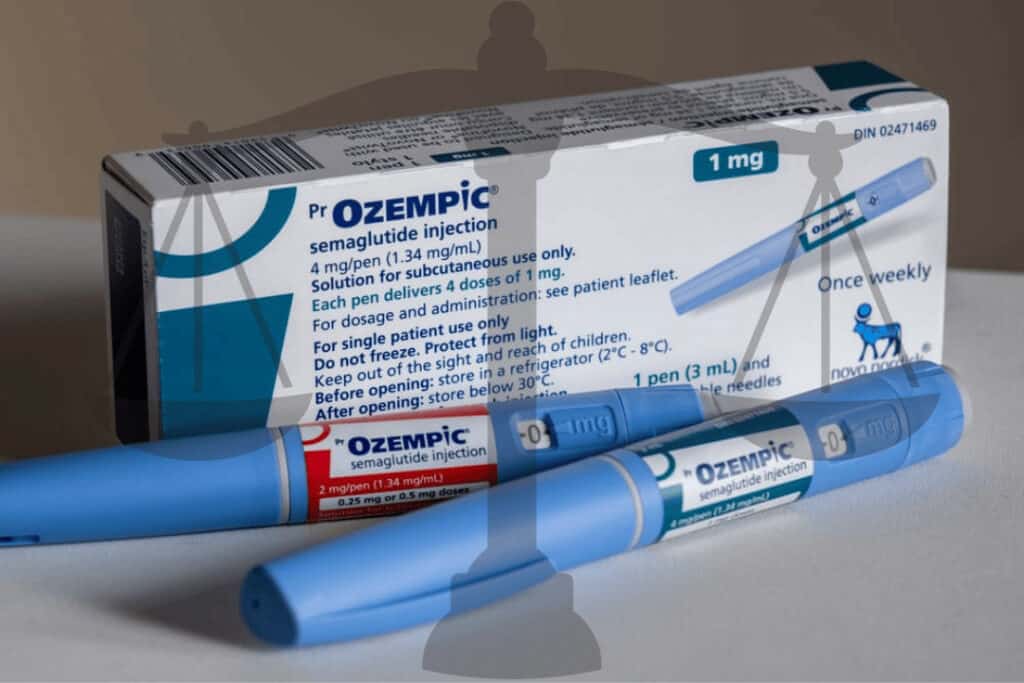In a significant development in prescription drug litigation, a wave of lawsuits has been filed against manufacturers of a popular class of diabetes and weight loss drugs known as glucagon-like peptide-1 receptor agonists (GLP-1s).
These drugs, which include Ozempic, Wegovy, and Mounjaro, have been linked to severe gastrointestinal injuries. Plaintiffs are now pushing to consolidate these injury lawsuits into a single federal court for more efficient handling.
The memorandum in support of the plaintiffs’ motion for transfer of actions to the Western District of Louisiana outlines a compelling case for centralizing these lawsuits under 28 U.S.C. § 1407. This statute provides for coordinated or consolidated pretrial proceedings in complex cases involving multiple lawsuits across various districts.
The Ozempic, Wegovy, and Mounjaro Injury Lawsuits
The class of drugs at the center of these lawsuits, including Ozempic (semaglutide), Saxenda (liraglutide), Trulicity (dulaglutide), and Mounjaro (tirzepatide), is designed to treat type 2 diabetes, manage weight, and reduce cardiovascular risks.
However, plaintiffs allege that they suffered from gastrointestinal injuries, such as gastroparesis (stomach paralysis) and ileus (lack of movement in the intestines), after taking these medications.
The plaintiffs accuse the drug manufacturers of failing to adequately warn physicians and patients about the severity and impact of these risks.
The Legal Arguments for Consolidation
The plaintiffs argue that centralizing these injury cases is necessary to avoid duplicative discovery, unduly burdensome discovery obligations, and inconsistent rulings on pretrial motions.
They point out that the Ozempic, Wegovy, and Mounjaro lawsuits involve common factual questions and similar allegations against the manufacturers. All plaintiffs took GLP-1 drugs as prescribed and subsequently suffered from gastrointestinal paralysis, requiring hospitalization in many cases.
Conversely, the defense is expected to deny these allegations and offer alternative explanations for the injuries. The Defendants are also likely to disagree on consolidation and the location of any consolidated proceedings.
Choice of Venue: Western District of Louisiana
The memorandum advocates for the Western District of Louisiana as the suitable venue for the consolidation, highlighting its efficiency in handling cases and its current capacity to handle such a complex litigation.
The district has a median time interval from filing to resolution of only 9.4 months, and no multidistrict litigations (MDLs) are currently pending.
Moreover, the memorandum notes that Judge James D. Cain Jr. of the Western District of Louisiana has substantial experience handling multi-plaintiff litigation and is well-equipped to oversee these GLP-1 cases.
The Growing Number of Lawsuits Over Ozempic, Wegovy, and Mounjaro
The surge in prescriptions for GLP-1s and the number of cases under investigation indicate an imminent increase in the number of cases in this litigation.
As of the filing of the motion, eighteen GLP-1 cases have been filed in eleven different federal district courts across the United States. Most GLP-1 cases have been filed in districts including Nebraska, the Western District of Wisconsin, the Eastern District of New York, the Western District of New York, and the Eastern District of Pennsylvania.
The plaintiffs’ counsel also reports investigating over 10,000 additional cases of clients who claim to have suffered severe gastrointestinal injuries after taking these drugs.
This underscores the magnitude of the issue and the potential impact of these lawsuits on the targeted drug manufacturers.
While the drug manufacturers have acknowledged the existence of gastrointestinal side effects, the injury lawsuits allege that they misrepresented these drugs as safe and downplayed the severity and impact of these gastrointestinal events.
The plaintiffs also claim that the drug labels did not adequately warn about the risks of gastroparesis and ileus.
The Role of Direct-to-Consumer Marketing by Drug Companies
The lawsuits bring to light the concerns over the aggressive marketing of these drugs.
Manufacturers have engaged in extensive direct-to-consumer marketing campaigns, touting the benefits of these drugs without adequately mentioning the risks.
This raises questions about the ethical responsibilities of pharmaceutical companies in advertising and the need for more transparent communication about potential side effects.
The Popularity of Ozempic, Wegovy, and Mounjaro for Weight Loss
The following are a few examples of these drugs’ substantial impact on the weight loss and diabetes medication market.
- 22% of Americans have asked their doctors to prescribe Ozempic for weight loss.
- 15% of Americans have used Ozempic for weight loss, and 47% know someone who has used it.
- There is a global shortage of some of these drugs due to skyrocketing demand, primarily due to weight loss purposes.
- Following its FDA approval in 2021, the demand for Wegovy has exceeded production capacities.
- There was a 250% increase in employer health insurance costs in early 2023 due to Wegovy’s
- Wegovy’s sales increased more than eightfold within one year.
- Mounjaro is claimed to be more effective for weight loss than Ozempic.
Summary
The plaintiffs reference previous decisions by the United States Judicial Panel on Multidistrict Litigation (JPML) to consolidate personal injury and product liability claims arising from the same drug class. They argue that the GLP-1 cases meet the statutory requirements for centralization under section 1407.
The push to consolidate these injury lawsuits in the Western District of Louisiana highlights the growing concern over the side effects of GLP-1 drugs. As this legal battle unfolds, how the courts will handle the ever-increasing number of lawsuits over some of the most popular prescription drugs on the market remains to be seen.



